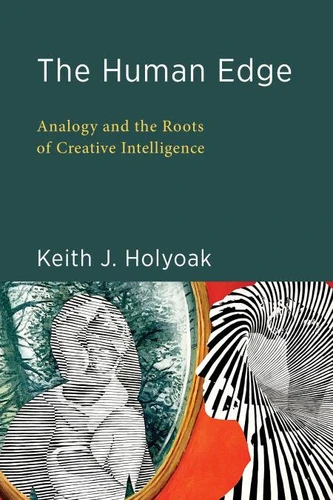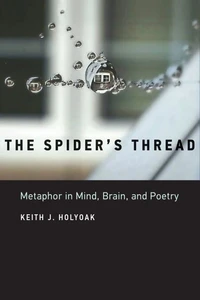The Human Edge. Analogy and the Roots of Creative Intelligence
Par :Formats :
Disponible dans votre compte client Decitre ou Furet du Nord dès validation de votre commande. Le format ePub protégé est :
- Compatible avec une lecture sur My Vivlio (smartphone, tablette, ordinateur)
- Compatible avec une lecture sur liseuses Vivlio
- Pour les liseuses autres que Vivlio, vous devez utiliser le logiciel Adobe Digital Edition. Non compatible avec la lecture sur les liseuses Kindle, Remarkable et Sony
- Non compatible avec un achat hors France métropolitaine
 , qui est-ce ?
, qui est-ce ?Notre partenaire de plateforme de lecture numérique où vous retrouverez l'ensemble de vos ebooks gratuitement
Pour en savoir plus sur nos ebooks, consultez notre aide en ligne ici
- Nombre de pages312
- FormatePub
- ISBN978-0-262-38132-1
- EAN9780262381321
- Date de parution25/02/2025
- Protection num.Adobe DRM
- Taille8 Mo
- Infos supplémentairesepub
- ÉditeurThe MIT Press
Résumé
What makes human cognition distinct from animal and artificial forms of intelligence-and how analogies play a crucial role in our unique abilities. In The Human Edge, cognitive scientist, poet, and translator Keith Holyoak takes a fresh look at what makes human intelligence special. His focus is analogy-the ability to see relational similarities between things that on the surface seem unalike. The book brings together a half century of research in cognitive, comparative, and developmental psychology, coupled with work in philosophy, law, education, linguistics, neuroscience, and artificial intelligence.
Rather than simply examining analogy as an isolated human ability, Holyoak places it in the broader context of a trinity of special human capacities-analogy, language, and understanding the minds of other people. Each of these capacities relies on distinct neural circuitry in the human brain. Holyoak analyzes the similarities-and critical differences-between cognition in humans and in other intelligent animals, ranging from crows to chimpanzees.
He also traces how relational thinking develops in children, emphasizing the distinctive advances that begin at about age three. Along the way, Holyoak paints a broad picture of how people use analogy in everyday life-to make jokes, to argue, to teach, to make moral judgments. He considers when an analogy counts as rational evidence-for or against a scientific hypothesis, or the judgment in a legal case.
He also evaluates the most recent advances in artificial intelligence that have started to achieve complex tasks previously limited to humans while highlighting the distinctive aspects of human creativity. In a time of rapid technological change, with ominous portents for society, this book provides a timely reexamination of what really counts as the human edge.
Rather than simply examining analogy as an isolated human ability, Holyoak places it in the broader context of a trinity of special human capacities-analogy, language, and understanding the minds of other people. Each of these capacities relies on distinct neural circuitry in the human brain. Holyoak analyzes the similarities-and critical differences-between cognition in humans and in other intelligent animals, ranging from crows to chimpanzees.
He also traces how relational thinking develops in children, emphasizing the distinctive advances that begin at about age three. Along the way, Holyoak paints a broad picture of how people use analogy in everyday life-to make jokes, to argue, to teach, to make moral judgments. He considers when an analogy counts as rational evidence-for or against a scientific hypothesis, or the judgment in a legal case.
He also evaluates the most recent advances in artificial intelligence that have started to achieve complex tasks previously limited to humans while highlighting the distinctive aspects of human creativity. In a time of rapid technological change, with ominous portents for society, this book provides a timely reexamination of what really counts as the human edge.
What makes human cognition distinct from animal and artificial forms of intelligence-and how analogies play a crucial role in our unique abilities. In The Human Edge, cognitive scientist, poet, and translator Keith Holyoak takes a fresh look at what makes human intelligence special. His focus is analogy-the ability to see relational similarities between things that on the surface seem unalike. The book brings together a half century of research in cognitive, comparative, and developmental psychology, coupled with work in philosophy, law, education, linguistics, neuroscience, and artificial intelligence.
Rather than simply examining analogy as an isolated human ability, Holyoak places it in the broader context of a trinity of special human capacities-analogy, language, and understanding the minds of other people. Each of these capacities relies on distinct neural circuitry in the human brain. Holyoak analyzes the similarities-and critical differences-between cognition in humans and in other intelligent animals, ranging from crows to chimpanzees.
He also traces how relational thinking develops in children, emphasizing the distinctive advances that begin at about age three. Along the way, Holyoak paints a broad picture of how people use analogy in everyday life-to make jokes, to argue, to teach, to make moral judgments. He considers when an analogy counts as rational evidence-for or against a scientific hypothesis, or the judgment in a legal case.
He also evaluates the most recent advances in artificial intelligence that have started to achieve complex tasks previously limited to humans while highlighting the distinctive aspects of human creativity. In a time of rapid technological change, with ominous portents for society, this book provides a timely reexamination of what really counts as the human edge.
Rather than simply examining analogy as an isolated human ability, Holyoak places it in the broader context of a trinity of special human capacities-analogy, language, and understanding the minds of other people. Each of these capacities relies on distinct neural circuitry in the human brain. Holyoak analyzes the similarities-and critical differences-between cognition in humans and in other intelligent animals, ranging from crows to chimpanzees.
He also traces how relational thinking develops in children, emphasizing the distinctive advances that begin at about age three. Along the way, Holyoak paints a broad picture of how people use analogy in everyday life-to make jokes, to argue, to teach, to make moral judgments. He considers when an analogy counts as rational evidence-for or against a scientific hypothesis, or the judgment in a legal case.
He also evaluates the most recent advances in artificial intelligence that have started to achieve complex tasks previously limited to humans while highlighting the distinctive aspects of human creativity. In a time of rapid technological change, with ominous portents for society, this book provides a timely reexamination of what really counts as the human edge.




